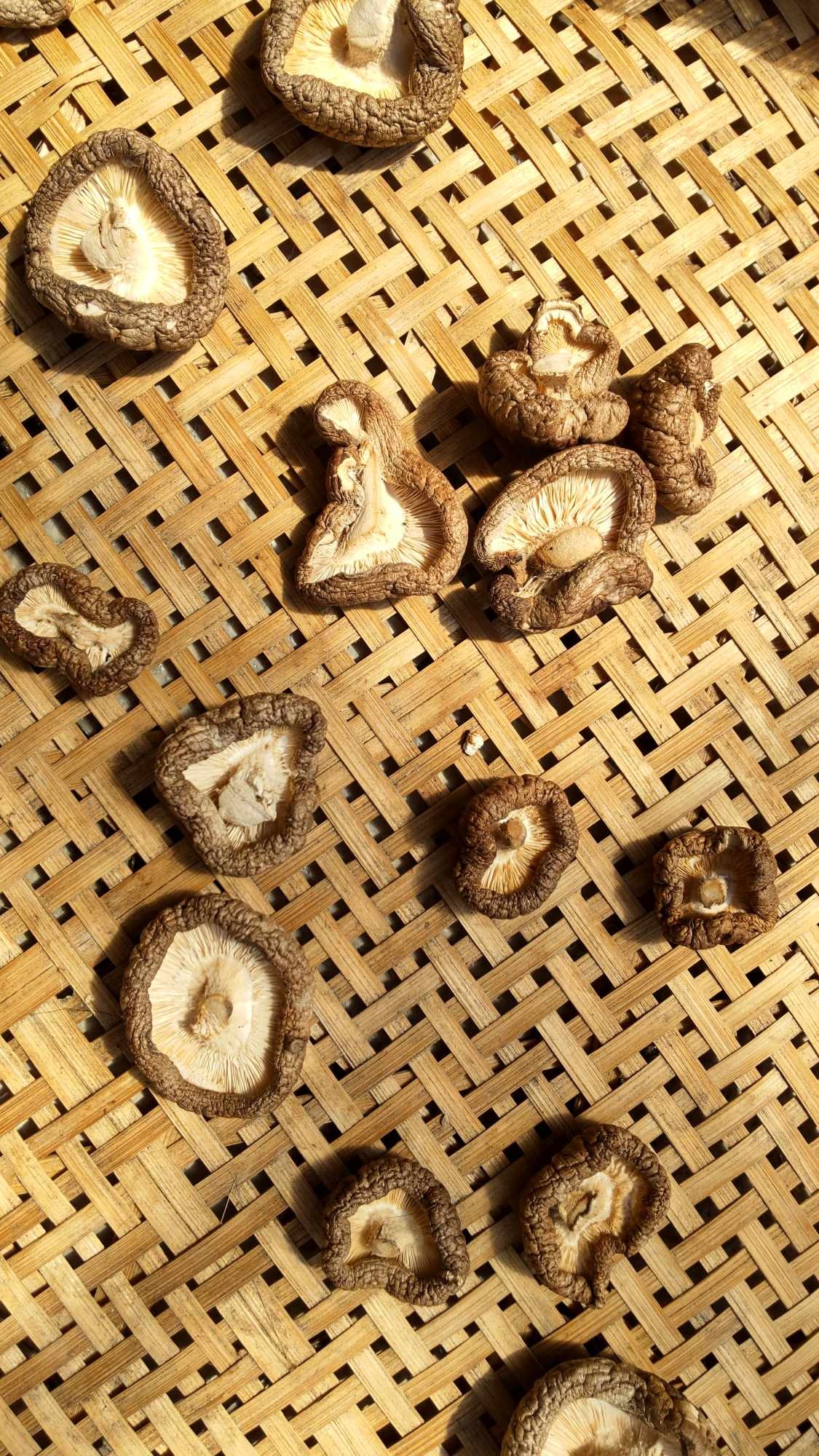
The spring weather in Japan has been very mild and sunny, so it's perfect to make dried mushrooms. We can buy them at stores, but I prefer my homemade ones. I use shiitake mushurooms because drying them brings extra benefits. For example, drying increases their Vitamin D content, which helps strengthen bones. They also contain folic acid, which helps prevent anemia, and biotin, which supports healthy skin. Once shiitake is dried, its flavor turns more delicious and its has different aroma as well.
I bought two packages of organic shiitake at a farmer's market.
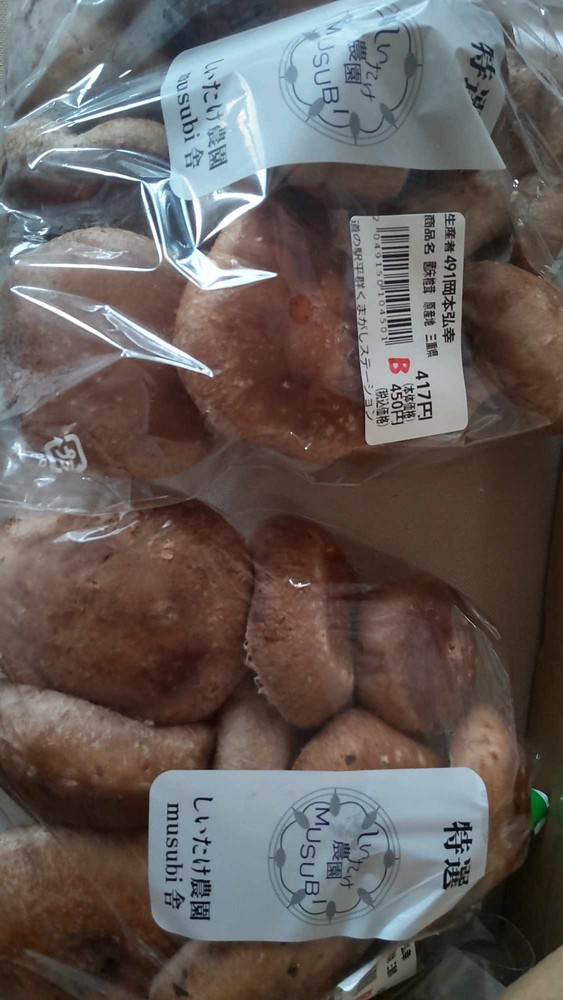
First, I separated the caps from the stems and sliced the stems.
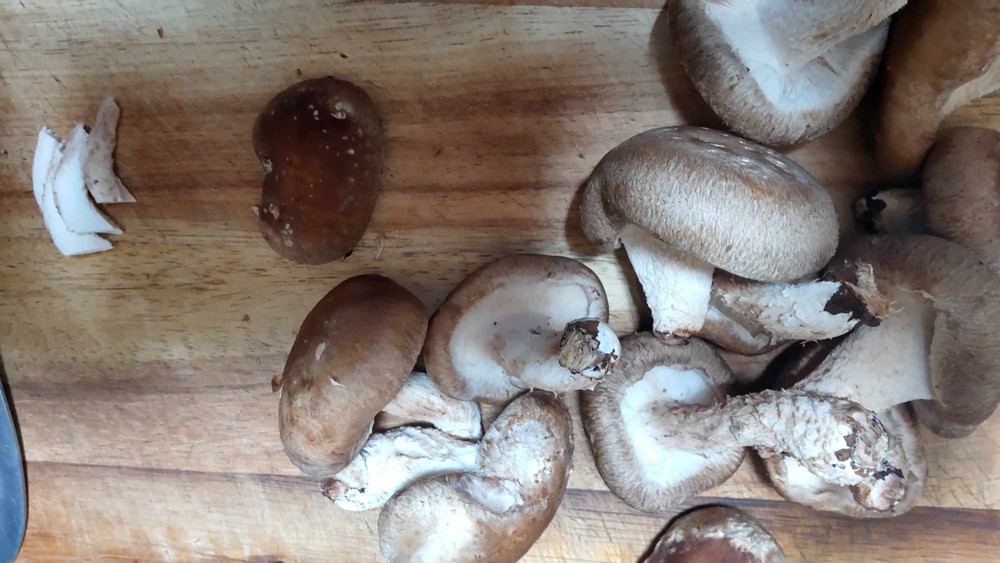
Then, I placed them in a bamboo basket and put it in a sunny spot.
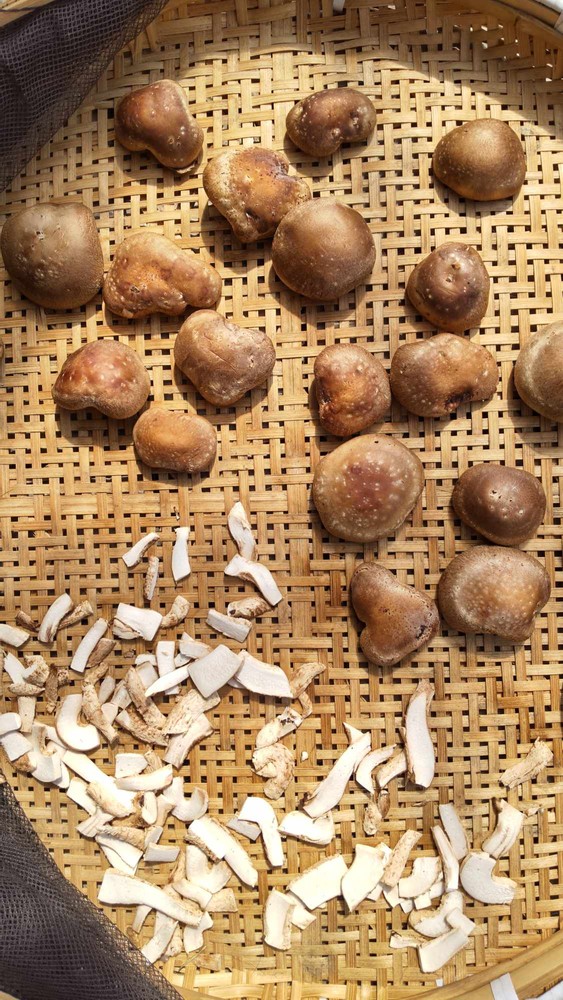
Leave them until they'll complete dry.
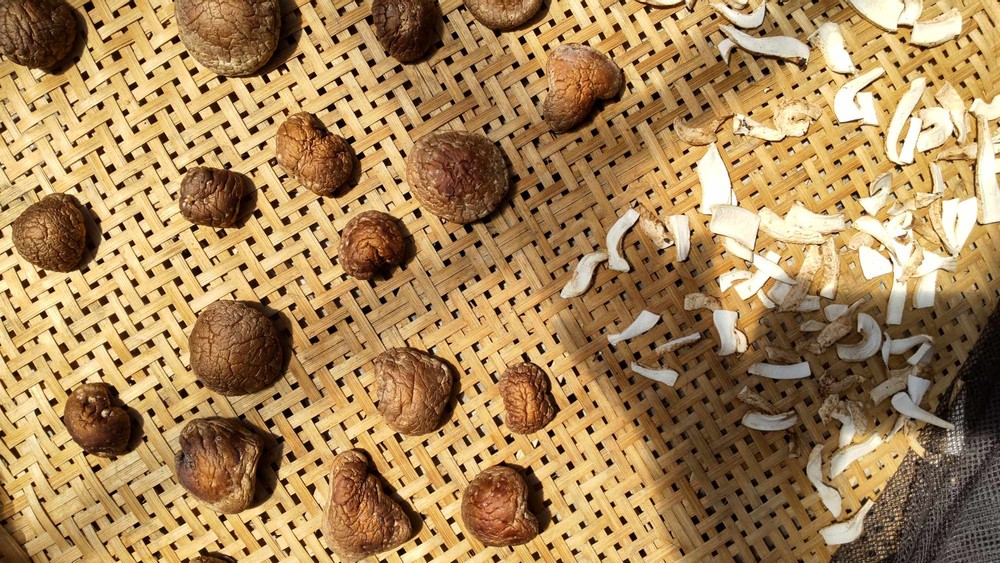
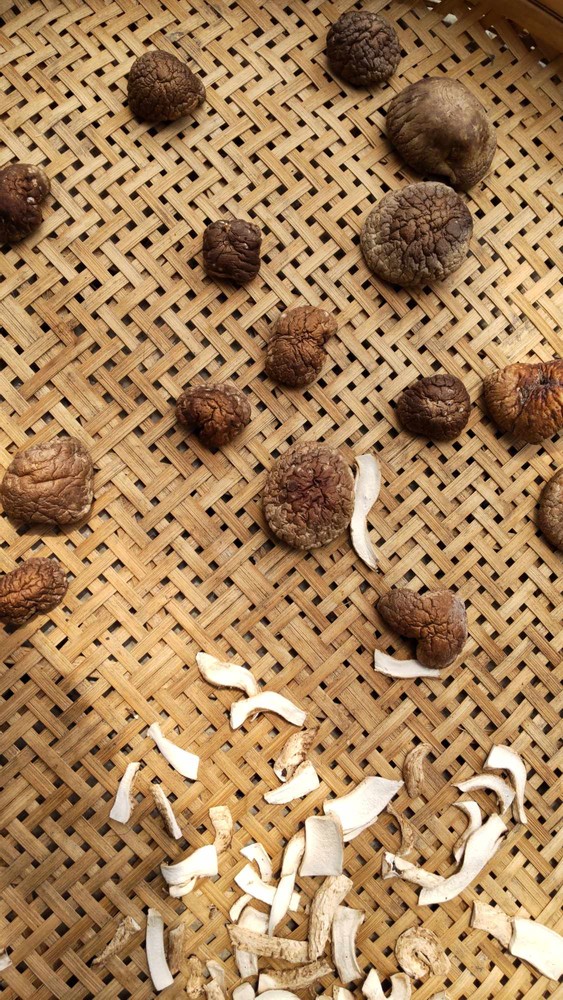
Next, I flipped them over to dry the other side.

Make sure both sides dry. Your shiitake is ready to use once they fully dry.
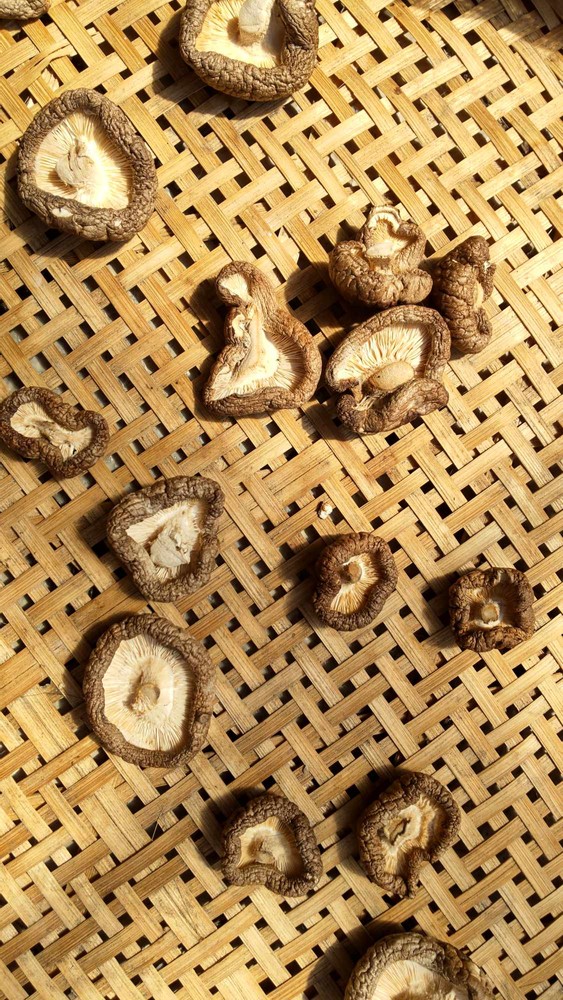
If you want to cook Japanese dishes, dried shiitake is one of the must ingredients. Today, I'd love to show you how to cook okowa (steamed rice dish made with glutinous rice mixed with meat or vegetables) to use my homemade dried shiitake.
First, let's soak your dried shiitake. It takes seven to eight hours, so I usually leave them all night.
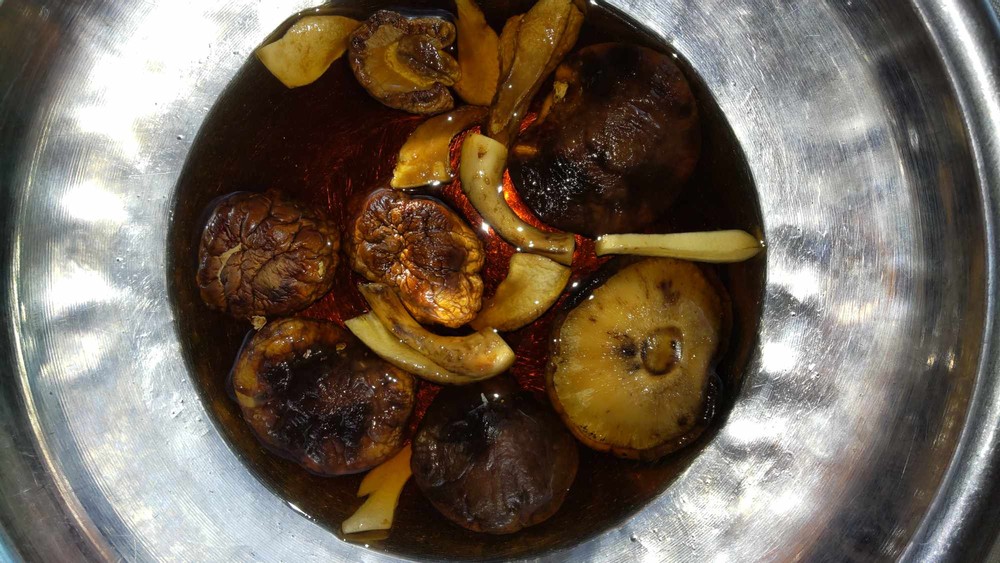
As you can see in the photo below, once they're re-hydrated, the mushrooms become much bigger than when they're dried. You can compare the re-hydrated shiitake and dried ones in the photo below.

Let's slice some vegetables. First picture shows gobo (burdock, root vegetable), a common ingredient in Japanese cooking.
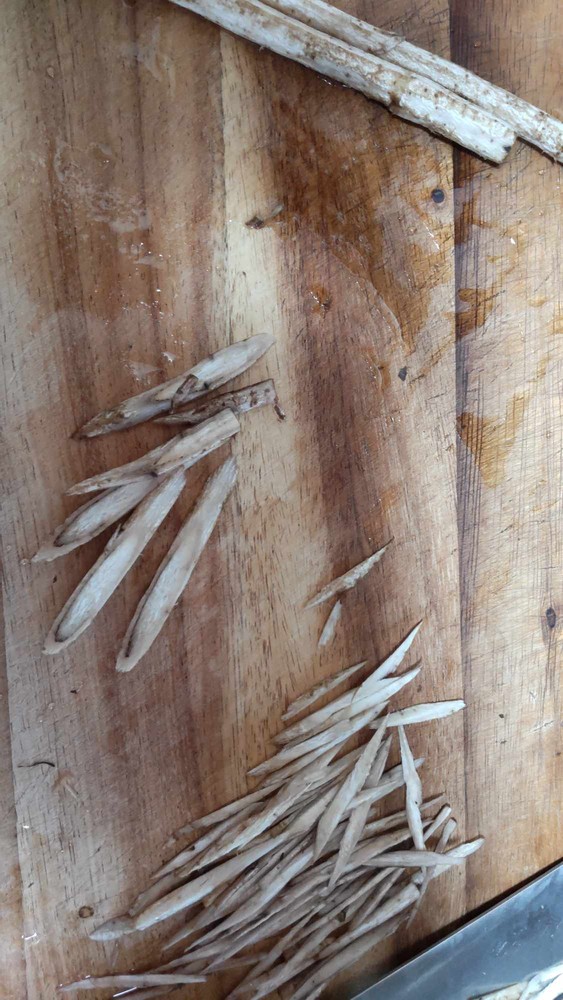
The next is a carrot.
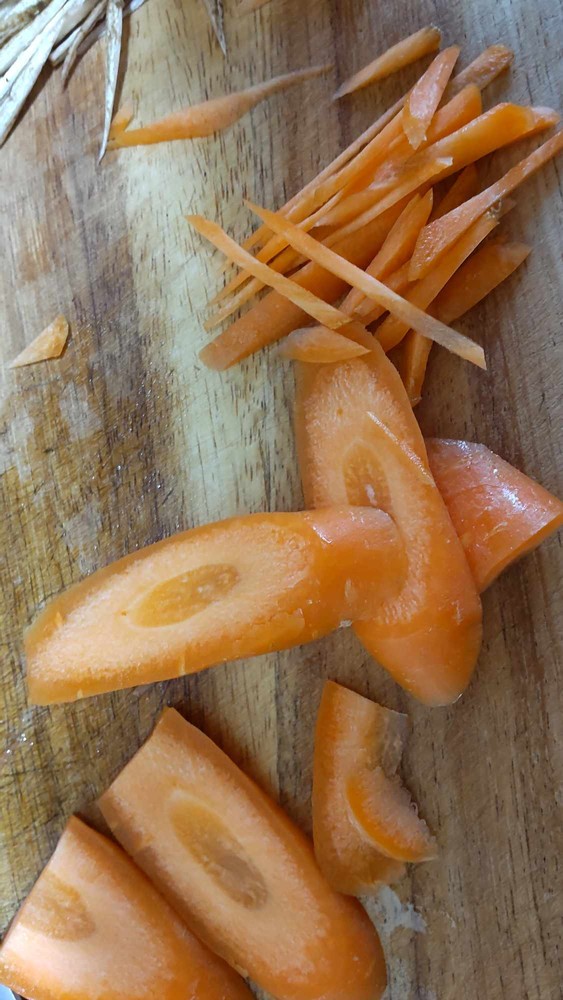
Then, you can see re-hydrated shiitake.
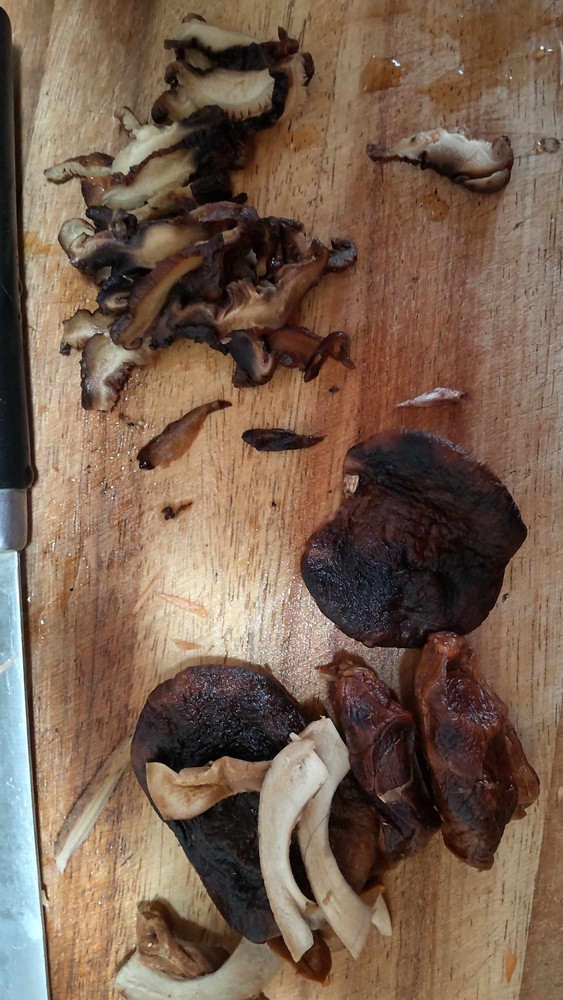
After that comes takenoko (bamboo shoot).
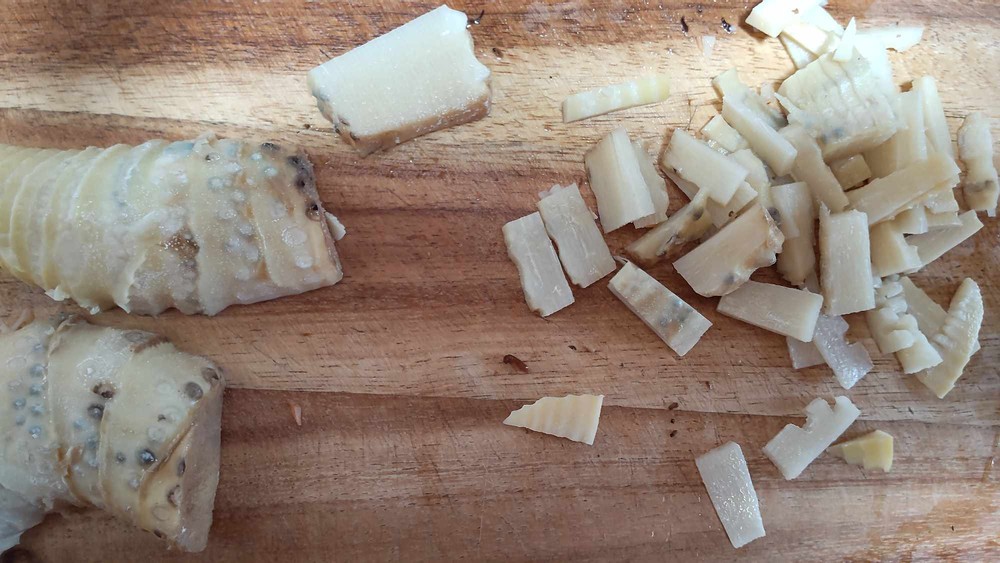
The picture below shows konjac (a jelly-like food made from konjac root).
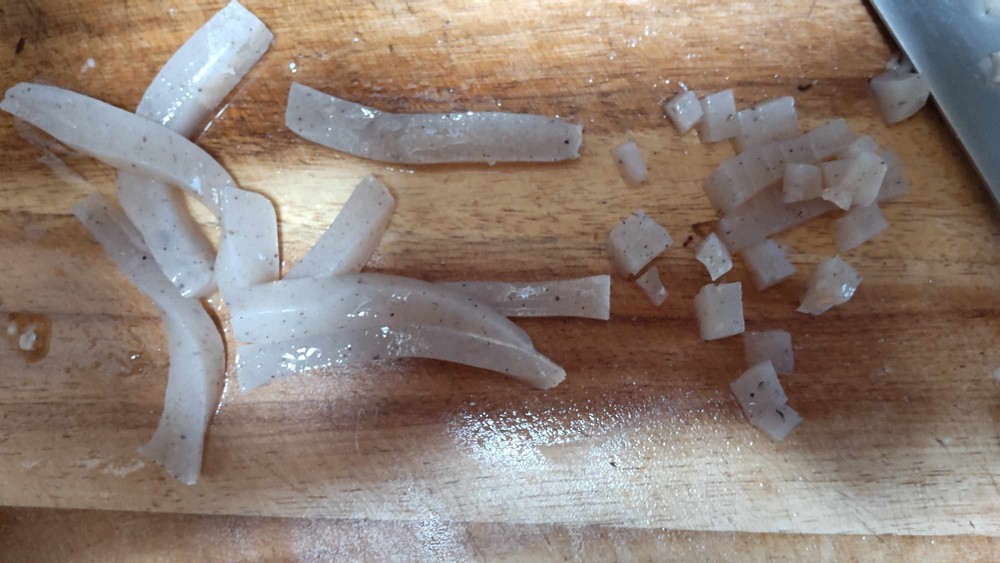
Since I was using raw chicken, I used a separate cutting board for the meat.
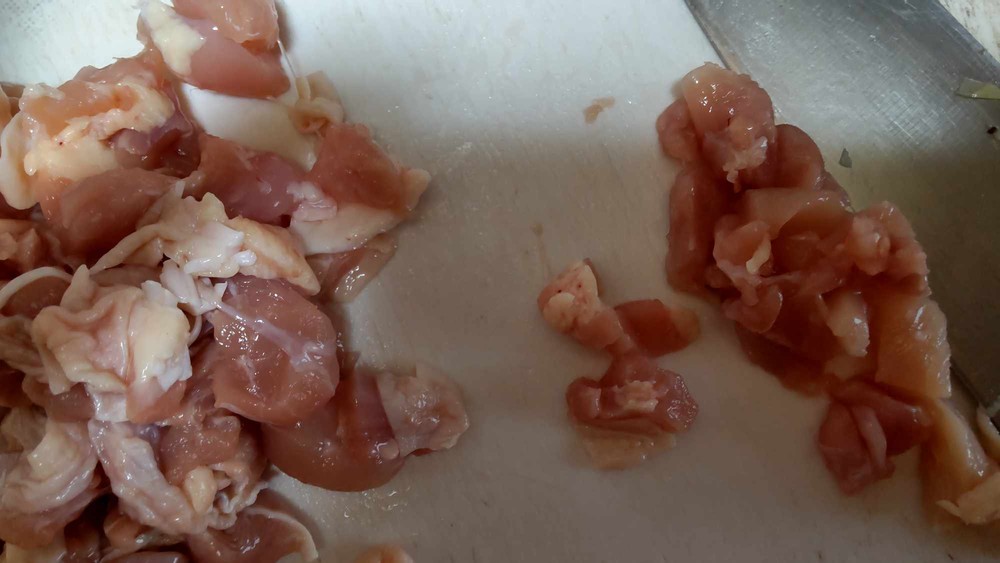
The picture below shows reconstituting liquid from the dried shiitake. This liquid makes a wonderful soup stock, so don't throw it away.
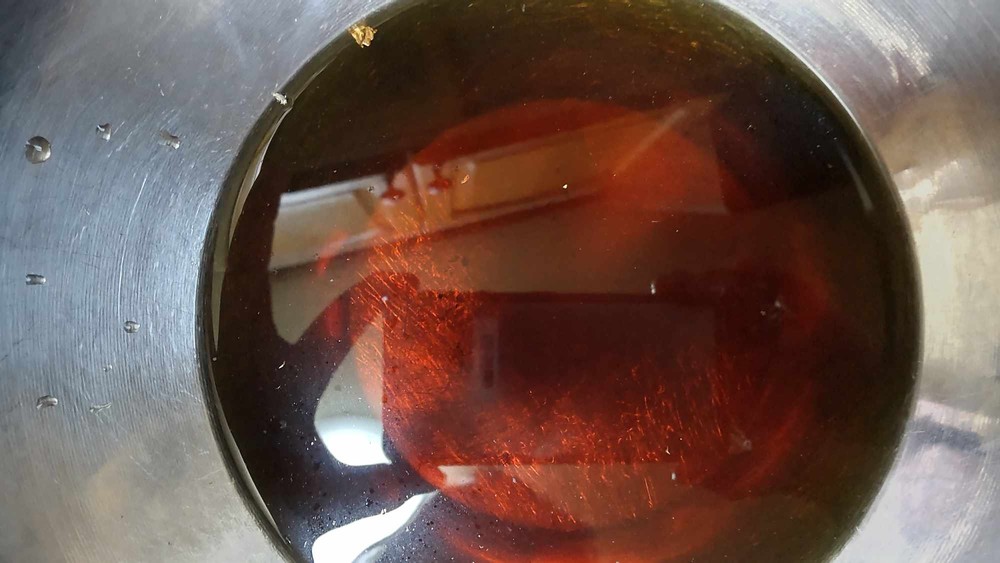
Now, I placed all the slices in a pan and added some sugar, soy sauce, mirin (cooking sake), the soaking liquid and soup stock from seaweed and bonito flake. Then, I simmered everything gently.

Everything looks soft and tender in the picture below.
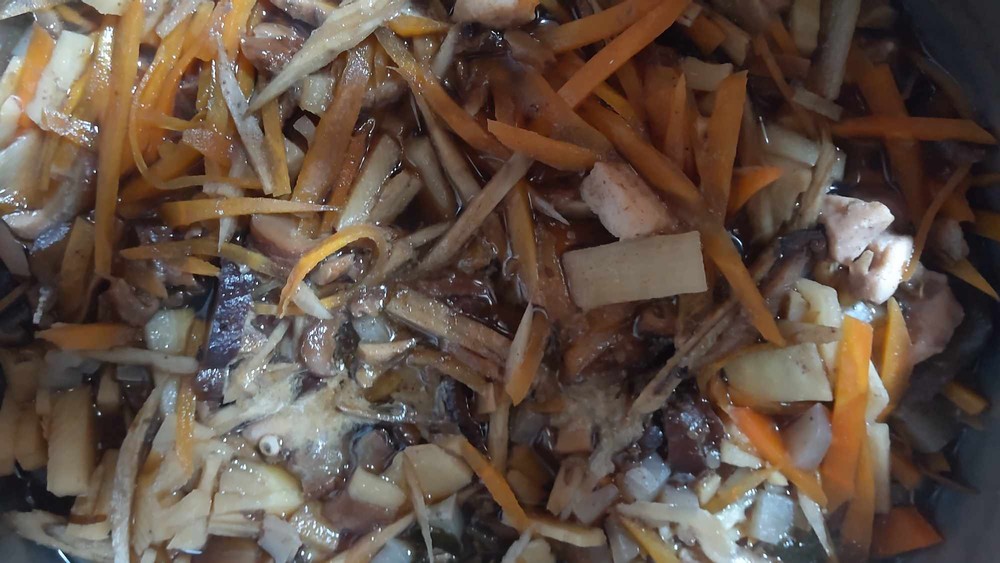
Keep the soup stock for cooking the rice.
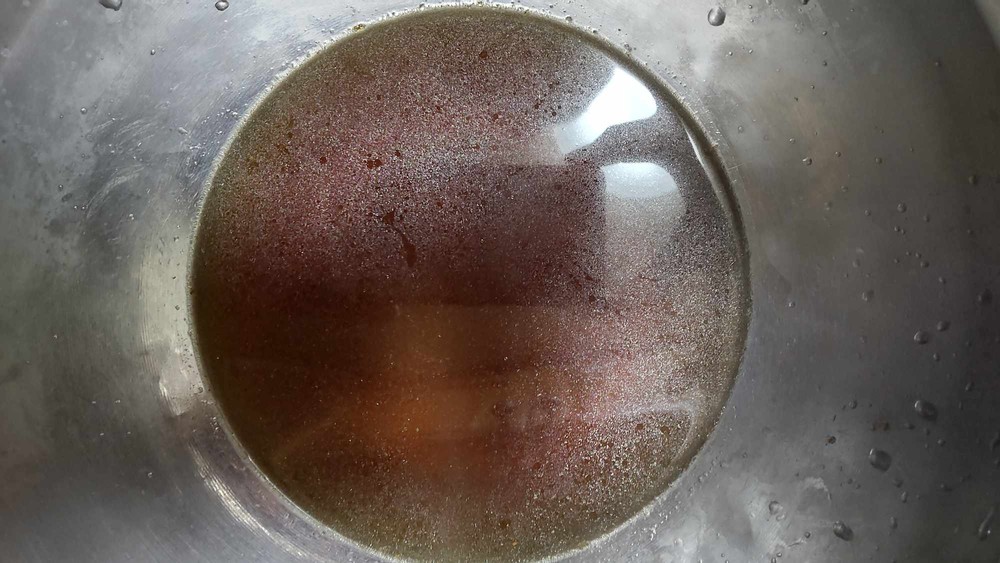
I used four cups of glutinous rice, three and a half cups of the soup stock and the cooked vegetables and cooked everything in a rice cooker.
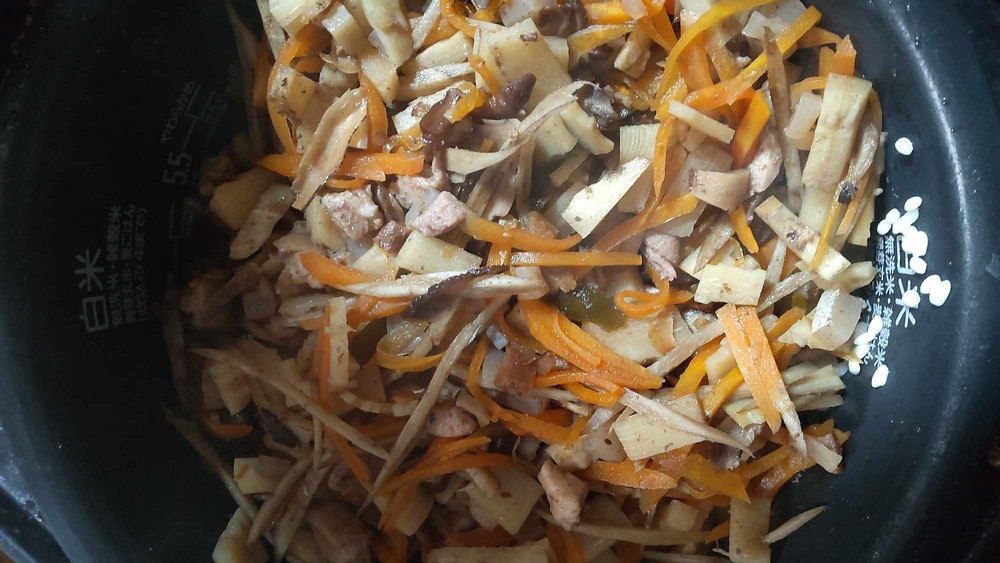
After about 35 minutes, it turned okowa.
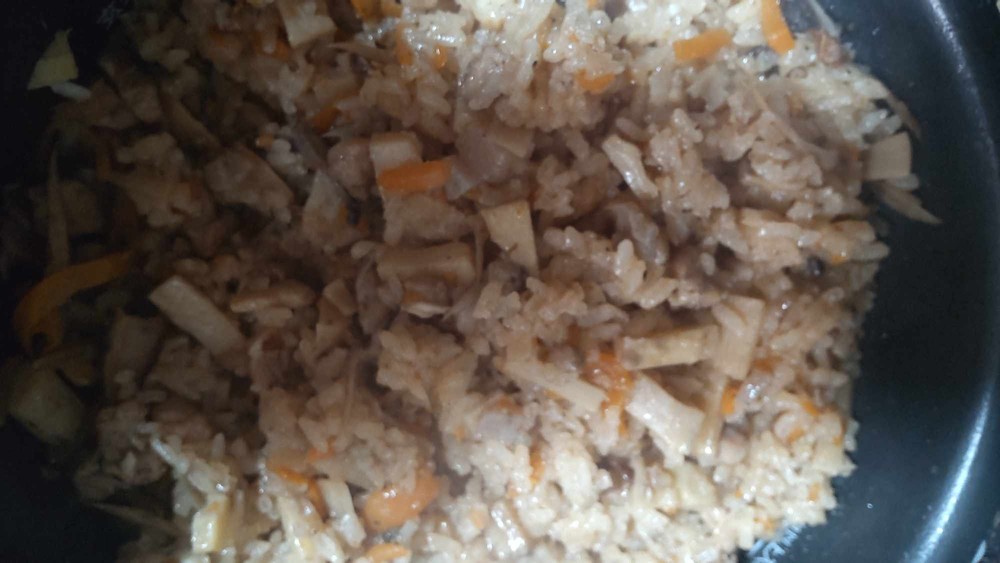
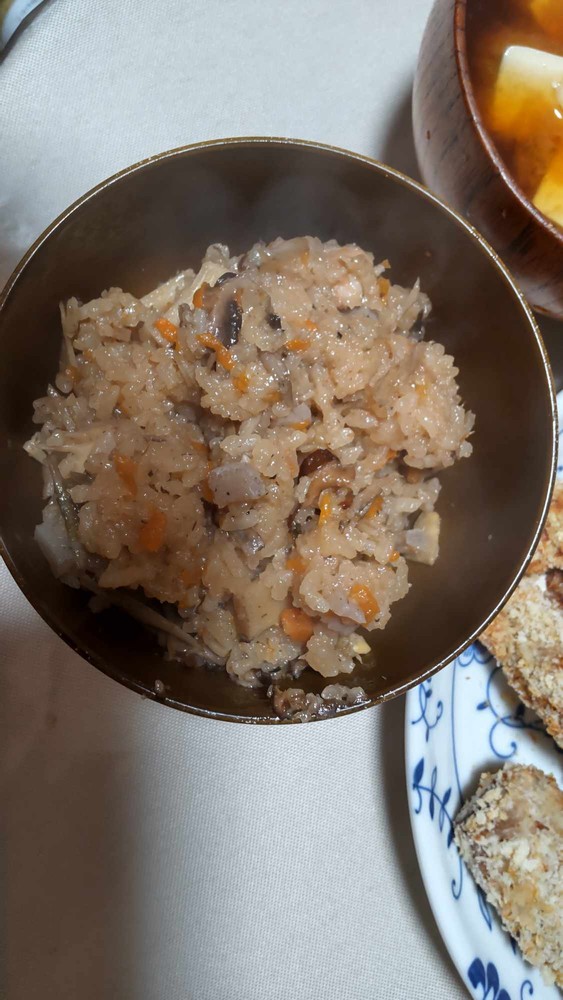
The photo below shows the meal I made that day.
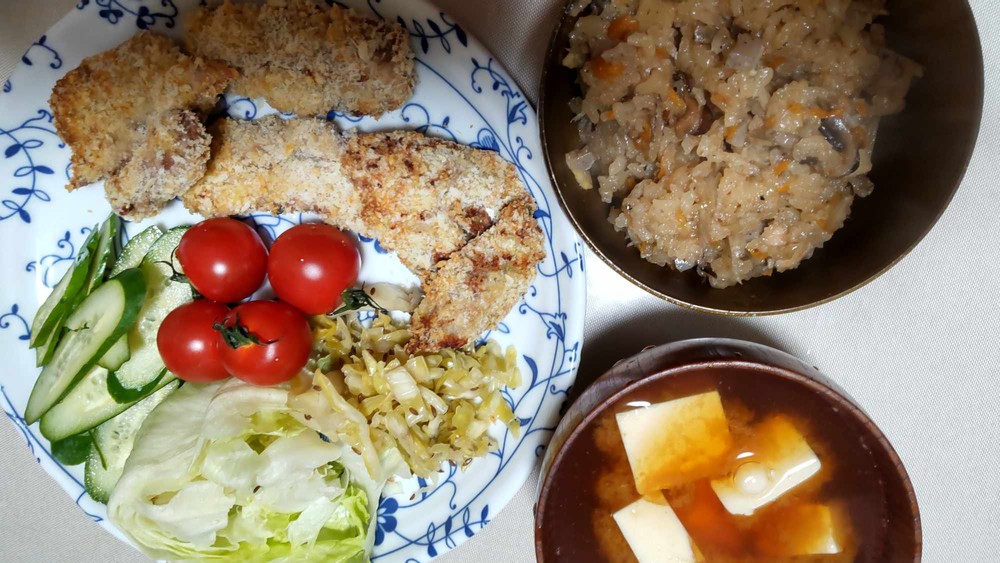
This is just one example of how to use dried shiitake mushrooms.
(4875)
おいしそう😋私は、おこわを作ったことがないです。白ごはん、あまり好きじゃなくて、炊き込みご飯系が好みだから、おこわを作ったらいいですよね、と今気がついた😅
私も若い頃は炭水化物ダイエットしていて白米食べなかったので(今は痴呆になる方が怖いので、食べるようになりましたw)、ほとんど食べなかった(ゆえ、娘もほとんど食べません)のですが、最近は、麦を混ぜたり、十穀米や十六穀米混ぜたりして食べてます。その方がビタミンや繊維がとれてヘルシーだし。おこわは、友人が毎年有機の餅米くれるので、作るように。何でも混ぜて炊くと白米よりもずぅっと美味しく感じます。不思議ですね。
私も麦飯とか雑穀米を食べてます。私には白米より美味しく感じられます。栄養価も高いですよね。私も白米より味ご飯派です!今ここで「味ご飯」と書いて、これはどの地方の言葉だろうと思って調べたんですけど。https://weathernews.jp/s/topics/201711/090075/ おもしろいですね!私は「炊き込み / かやく / 味 + ご飯」を気分で使い分けます。
Looks yum! I don't have a rice cooker and always cook rice in the saucepan. I've been wanting to buy one. You can use rice cookers for many different meals right?
Almost carrot is the only ingredient I can recognize! :DD I'm aware of mushroom but I have no idea about the different types of mushroom!
Thanks for showing us a part of the Japanese cusine!
味ご飯ははじめて聞きました。主人は、富山生まれで義父がまた転勤族だった関係であちこち転勤しているのですが(義母は東京出身)、炊き込みご飯と言います。当然のごとく関西育ちの私はかやくご飯です。面白いですね。大学時代の友人が三重出身だったけど、なんて呼んでいたんだろ~。今度、北九州の友人に会ったらなんて言うかも聞いてみます。そんなに県によって呼び名が違うなんて全く知りませんでした。
@via-chan I only use the rice cooker for cooking rice, but you can use different ways. We have many varieties of cooking rice, so you can make them with it.
@Double-Zee Thank you for reading and commenting, ZZ. It's always fascinating to know unfamiliar things, isn't it? There're so many different mushrooms in the world, and for example, I love porcini (Italian mushrooms). I'd love to learn about your food culture too!